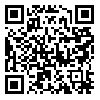Thu, Dec 25, 2025
Volume 14, Issue 3 (Summer 2024)
PTJ 2024, 14(3): 183-190 |
Back to browse issues page
Download citation:
BibTeX | RIS | EndNote | Medlars | ProCite | Reference Manager | RefWorks
Send citation to:



BibTeX | RIS | EndNote | Medlars | ProCite | Reference Manager | RefWorks
Send citation to:
Yousefian Molla R, Sadeghi H, Kiani A. Effect of Changing Arm Swing Speed on the Lower Limb 3D Maximum Mechanical Power While Walking. PTJ 2024; 14 (3) :183-190
URL: http://ptj.uswr.ac.ir/article-1-622-en.html
URL: http://ptj.uswr.ac.ir/article-1-622-en.html
1- Department of Sports Biomechanics, Faculty of Physical Education and Sports Science, Central Tehran Branch, Islamic Azad University, Tehran, Iran.
2- Department of Sports Biomechanics and Injuries, Faculty of Physical Education and Sports Sciences, Kharazmi University, Tehran, Iran.
3- Department of Computer Engineering, Faculty of Engineering, Danesh Alborz University, Ghazvin, Iran.
2- Department of Sports Biomechanics and Injuries, Faculty of Physical Education and Sports Sciences, Kharazmi University, Tehran, Iran.
3- Department of Computer Engineering, Faculty of Engineering, Danesh Alborz University, Ghazvin, Iran.
Abstract: (3326 Views)
Purpose: Walking is a complex activity that involves multiple parts of the body, including the lower limb, upper limb, trunk, head, and neck. Contrary to popular belief, walking is not solely related to the forward movement of the legs. Biomechanical analysis, especially in terms of mechanical power, is an essential aspect of gait studying. The study aims to explore how altering arm swing speed affects the 3D maximum mechanical power of the lower limb while walking.
Methods: In this study, 30 healthy women walked on a force plate path in front of cameras in three states of normal upper limb swing, fast upper limb swing, and slow upper limb swing. The calculation of muscle power in each lower limb joint and plane is based on the product of the joint moment and its angular velocity. The average mechanical power of the joints was compared using the repeated measurement test (P≤0.05).
Results: The results showed that changing the swing speed of the arm has a significant effect on all absorption and production parameters related to the mechanical power of the lower limb joints.
Conclusion: In conclusion, any change in arm movement during walking can affect movement, balance, and gait biomechanics.
Methods: In this study, 30 healthy women walked on a force plate path in front of cameras in three states of normal upper limb swing, fast upper limb swing, and slow upper limb swing. The calculation of muscle power in each lower limb joint and plane is based on the product of the joint moment and its angular velocity. The average mechanical power of the joints was compared using the repeated measurement test (P≤0.05).
Results: The results showed that changing the swing speed of the arm has a significant effect on all absorption and production parameters related to the mechanical power of the lower limb joints.
Conclusion: In conclusion, any change in arm movement during walking can affect movement, balance, and gait biomechanics.
Type of Study: Research |
Subject:
General
Received: 2024/01/14 | Accepted: 2024/07/25 | Published: 2024/07/1
Received: 2024/01/14 | Accepted: 2024/07/25 | Published: 2024/07/1
Send email to the article author
| Rights and permissions | |
 |
This work is licensed under a Creative Commons Attribution-NonCommercial 4.0 International License. |






